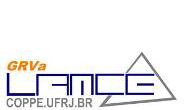IMAACA 2013 Proceeding
3D computational model including topographic data for the prediction of dire wind regimes and vortex shedding in an attempt to improve tall building reliability
Authors: Drishtysingh Ramdenee, Pierre Luc Paradis, Hussein Ibrahim, Hemraj Joyram, Adrian Ilinca
Abstract
A structure‚??s wind resistance largely determines its Extended Coverage Endorsement (ECE) and is an important factor in determining total insurance costs. Insurance policies and costs are often not very representative or prejudicial to either the insurer or the policy holder due to uncertainties in the ability to predict structures‚?? wins resistance capacities. In other words, according to International Standards (ISO 2394:1998(E)) all structures including tall buildings must abide to the criteria of serviceability. Serviceability means the ability of a structure or structural element to perform adequately under normal use, expected actions or bounded actions (actions which have a limited value which cannot be exceeded and which is exactly or approximately known). Consequently, the ISO rules stipulate that choice of structural system, design for durability and implementation of quality policy need to be accordingly set up as to appropriate degree of reliability, which, in turn should be judged with due regard to the possible consequences of failure. In the case of tall buildings, mostly as to what concerns claddings, it is becoming more and more important to define proper reliability framework to increase certainty and render insurance policies more tailor made and unbiased. When it comes to static or quasi-permanent value solicitations on buildings such as known winds, collisions, etc, a high level of certainty exists in the calculations and models predicting failure and damage. However, when it comes to loads with high variability, the reliability index becomes very low. In many countries, skyscrapers are rapidly growing in restrained areas such that the formed corridors accelerate the winds and increase formation of vortices. Furthermore, in cases of rapidly changing gusts, the wind loads can be quite dangerous and cause damage and even failure to the buildings. Unfortunately, limited work enables very precise prediction of such loads such that insurance policies are accordingly unspecific. In this paper, work conducted at the Wind Energy Research Laboratory (WERL) to model pressure and velocity fields around buildings in a test area is presented. In most studies, proposed results are only for one building only and the wind regime do not account for the topography around. This present article, wishes to propose a full scale 3D simulation of the pressure, turbulence and velocity regimes around multiple buildings in the same city whilst accounting for topography and canopy information of the region. Further to being a tool to uncertainty prediction in wind modeling, this highly complex CFD (computational Fluid dynamics) model proposes vortex modeling in high gradient regions. These are, moreover, compared and calibrated using a Matlab model.
 2013
2013








































